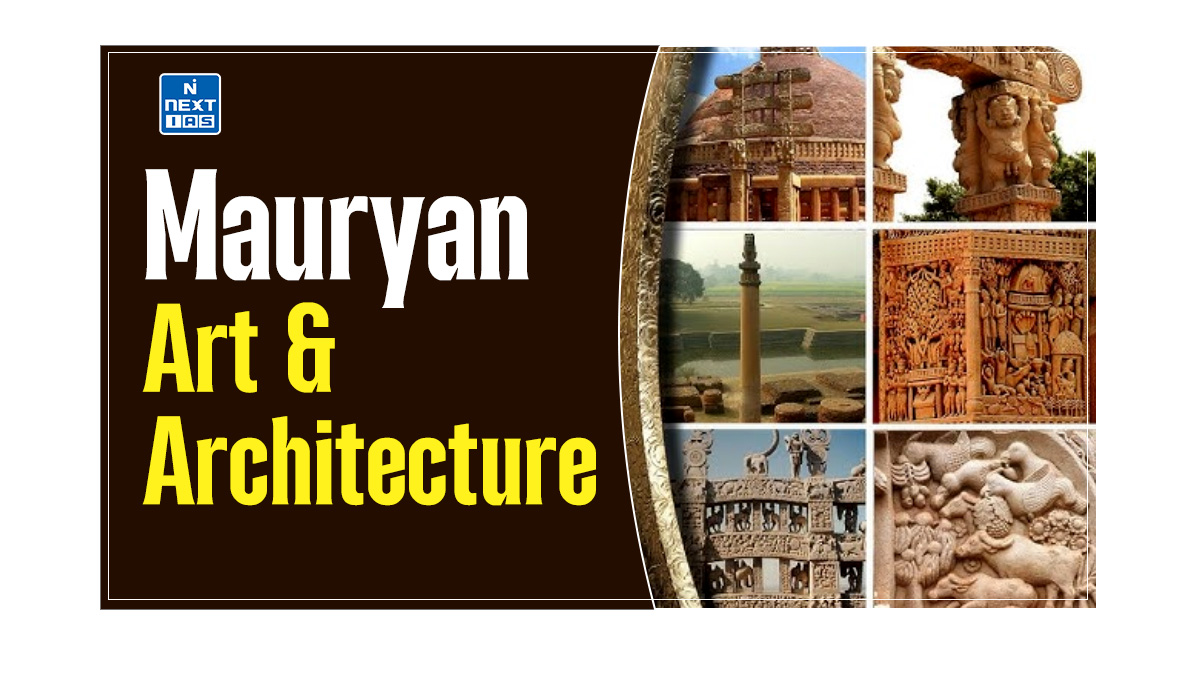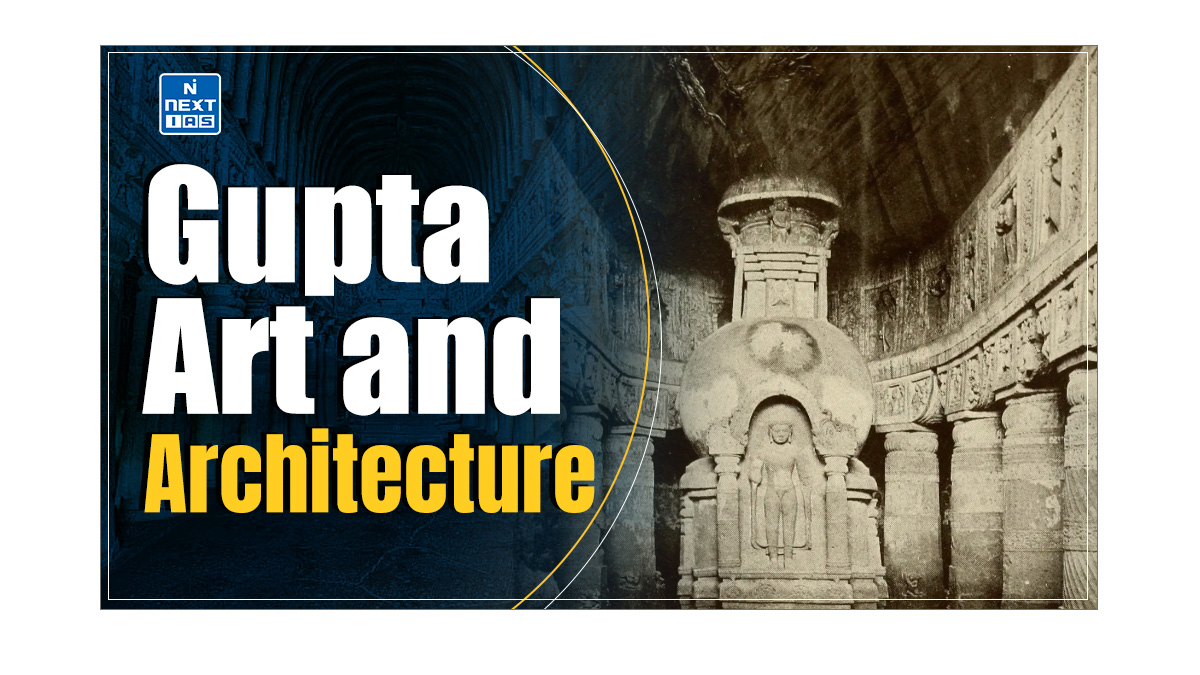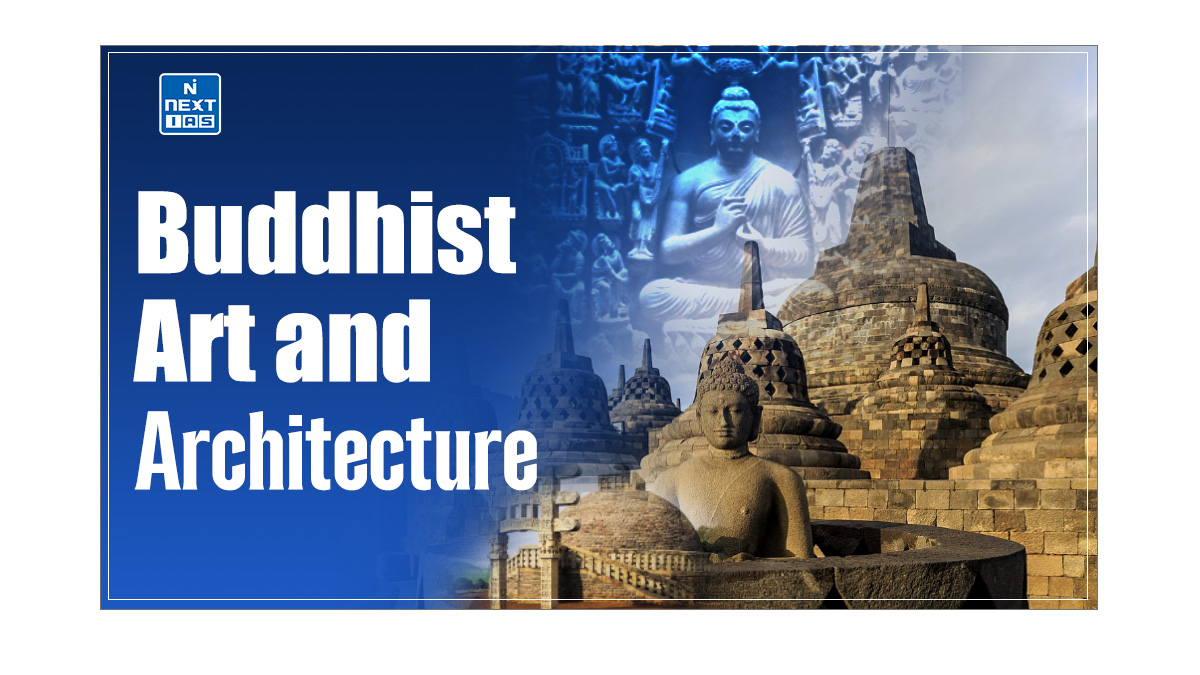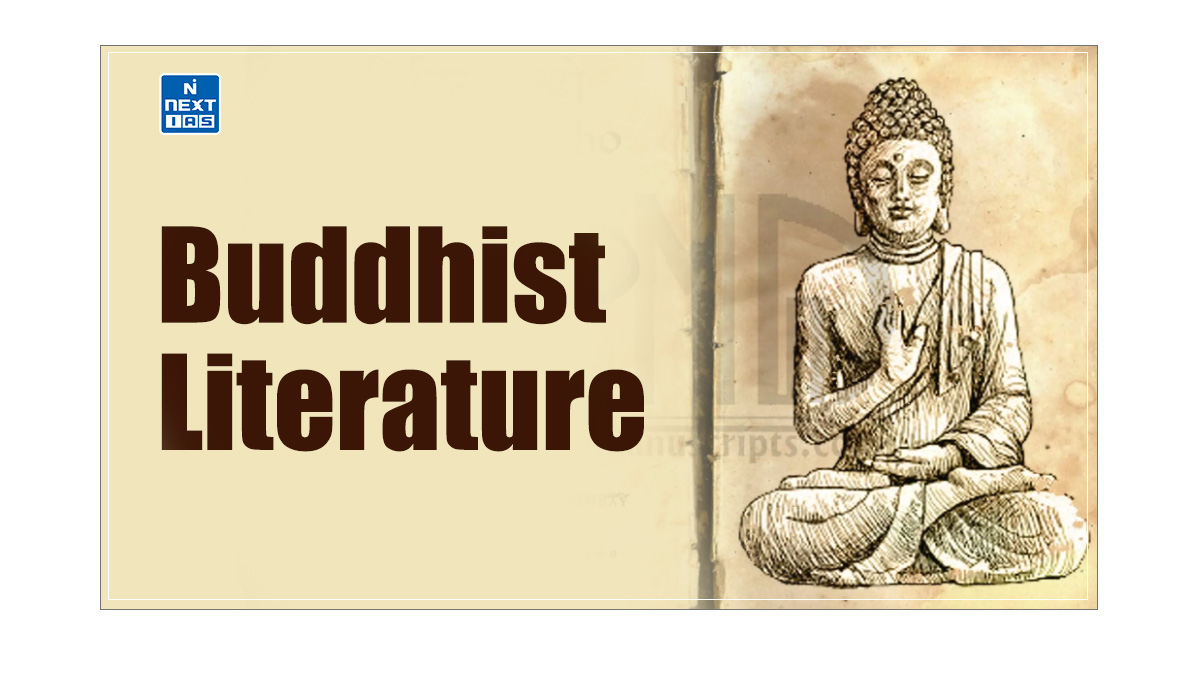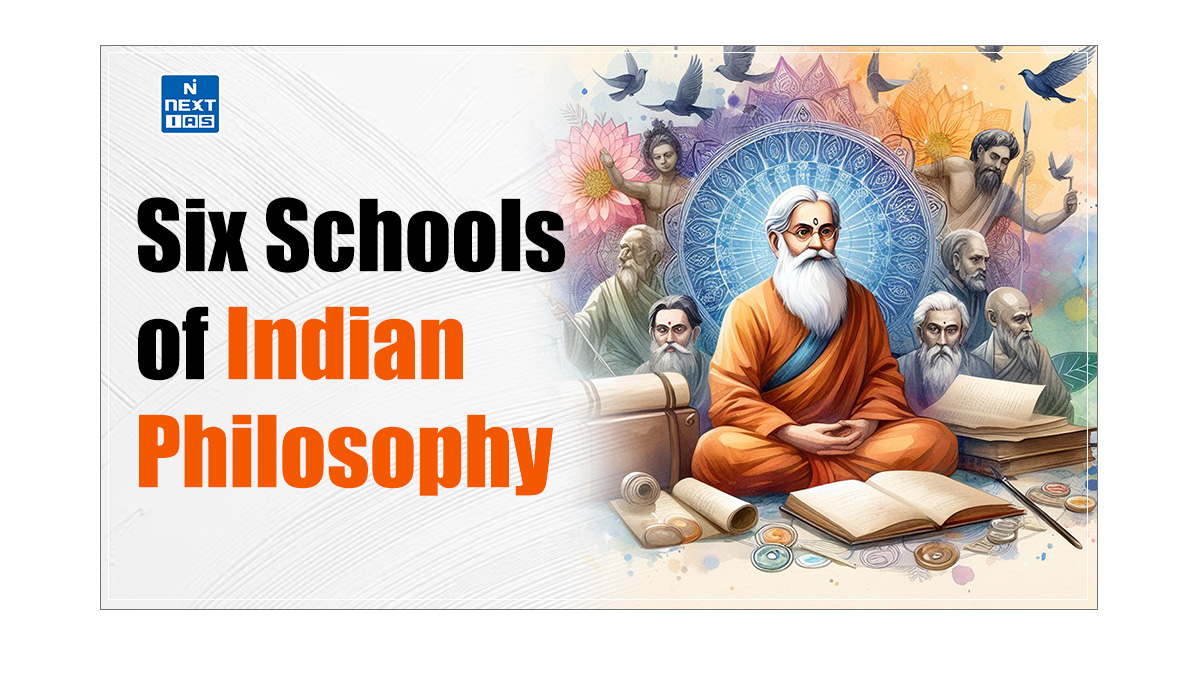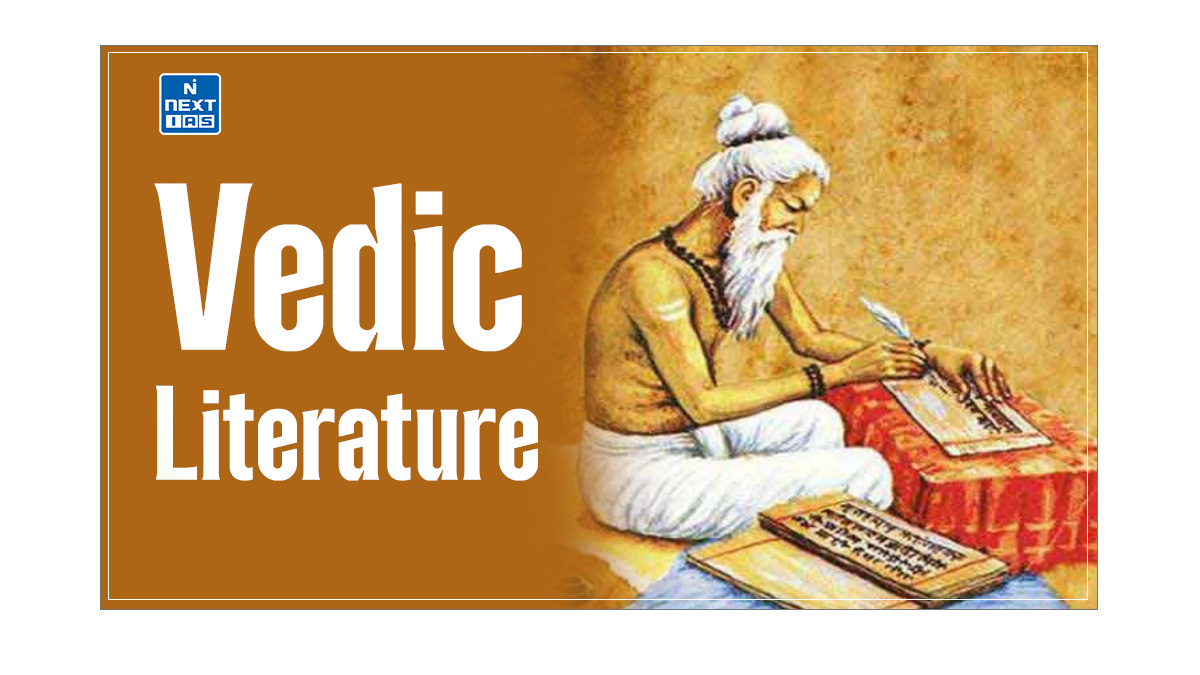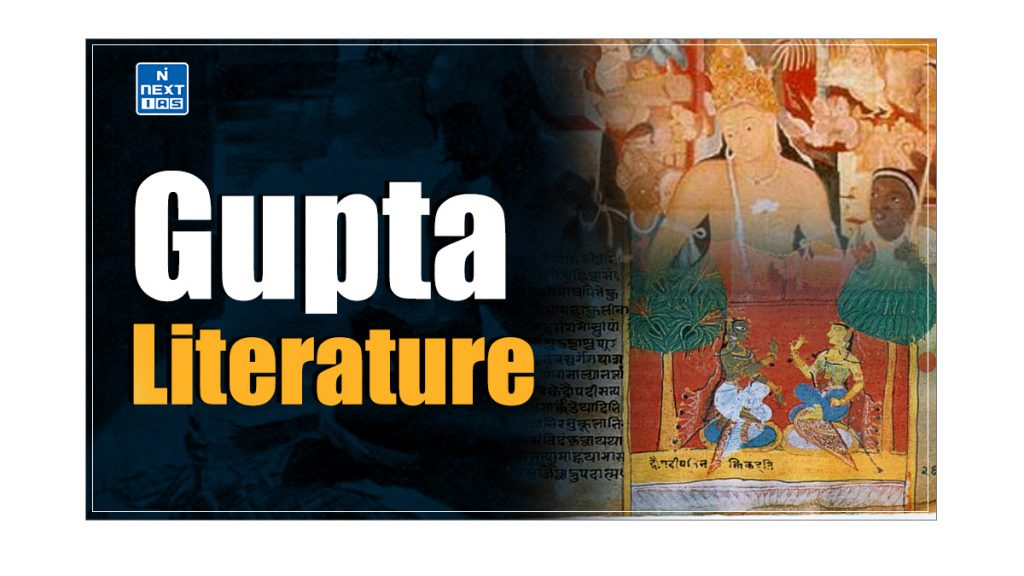
Gupta literature flourished during the Gupta Empire (4th to 6th century AD), marking a high point in classical Sanskrit writing with significant contributions in poetry, drama, and religious texts. Its significance lies in shaping the development of Indian literary traditions, influencing neighbouring regions’ literature, and establishing a rich cultural heritage that continues to be studied and admired. This article aims to study in detail the characteristics, major literary works, influence, and lasting legacy of Gupta literature.
About Gupta Period
- The Gupta Period, from the 4th to the 6th century AD, is often hailed as a “Golden Age” in Indian history.
- During this era, India witnessed remarkable advancements in various fields, including art, science, and literature.
- The Guptas, known for their patronage of culture and learning, fostered an environment where classical Sanskrit literature flourished, creating some of the most celebrated works in Indian literary history.
- This period marked a significant cultural renaissance, and literature played a central role in shaping the intellectual and artistic landscape.
Read our detailed article on the Gupta Empire, Gupta Administration, Gupta Society, Gupta Science and Technology, Gupta Economy, Gupta Inscriptions, Guild System and Gupta Art and Architecture.
Gupta Literature
- This period is remarkable for producing Gupta literature. 13 plays written by Bhasa belong to this period.
- During this period, we also noticed an increase in the production of religious literature of the Gupta period.
- Most works of the Gupta period had a strong religious bias. The two great epics, the Ramayana and the Mahabharata were finally compiled probably in the fourth century AD.
- The Puranas follow the lines of the epics, and the earlier ones were finally compiled in Gupta times. They are full of myths, legends, sermons, etc., which were meant for the education and edification of the common people.
- The Gupta Literature also saw the compilation of various Smiritis or law books written in verse. The phase of writing commentaries on the Smritis begins after the Gupta period.
- The Gupta period also saw the development of ‘Sanskrit grammar based on Panini and Patanjali.
- This period is particularly memorable for the compilation of the Amarakosha by Amarsimha, a luminary in the court of Chandragupta II.
- Overall, the Gupta period was a bright phase in the history of classical literature. It developed an ornate style that differed from the old, simple Sanskrit.
- There is no doubt that Sanskrit was the court language of the Guptas.
- Although we get a lot of Brahminical religious literature, the period also produced some of the earliest pieces of secular literature.
Features of Gupta Literature
The major features of the Gupta Literature are as follows:
- Flourishing of Classical Sanskrit: The Gupta period witnessed the peak of classical Sanskrit, becoming the dominant literary language and contributing to a rich corpus of literary works.
- Patronage of Gupta Rulers: Gupta rulers were avid patrons of scholars, poets, and writers, fostering an environment encouraging literary creativity and intellectual pursuits.
- Integration of Themes: Gupta literature seamlessly integrated religious themes with secular literature and scientific texts, reflecting the period’s diverse intellectual interests and cultural synthesis.
- Development of Poetry and Drama: The era saw a significant advancement in poetry and drama, with notable works by poets and dramatists such as Kalidasa, Bharavi, and Bhāsa.
- Contributions to Scientific Texts: Gupta literature included important scientific and technical texts, such as Aryabhata’s “Aryabhatiya” and Varahamihira’s “Brihat Samhita,” marking significant contributions to mathematics, astronomy, and astrology.
Major Literary Works of Gupta Period
The major literary works of the Gupta Period have been discussed below.
Religious Texts
The religious texts in Gupta Literature are as follows:
- During the Gupta period, Smritis and Puranas expanded and codified significantly.
- These texts played a crucial role in shaping religious and cultural practices in India.
- The Vishnu Purana and the Matsya Purana are among the most important works from this era.
- The Vishnu Purana elaborates on the mythology and worship of Vishnu, while the Matsya Purana contains accounts of various mythological and historical events.
- These Puranas helped preserve and transmit religious traditions, providing a framework for Hindu cosmology, rituals, and ethics.
Secular Literature
The secular texts in Gupta Literature are as follows:
- Kalidasa: Kalidasa, one of the most renowned poets of the Gupta period, made significant contributions to classical Sanskrit literature. His works are celebrated for their lyrical beauty and depth of emotion. Notable among his works are:
- “Shakuntala“: A poignant drama that narrates the love story of Shakuntala and King Dushyanta, blending romance with themes of duty and fate.
- “Meghaduta“: A lyrical poem where a lovesick yaksha (nature spirit) sends a message to his beloved through a cloud, showcasing Kalidasa’s mastery of nature imagery and emotional expression.
- “Raghuvamsha“: An epic poem chronicling the lineage of the Raghu dynasty, highlighting heroic deeds and moral values.
- Bharavi: Known for his epic poem, “Kirātārjunīya“, which recounts the story of Arjuna’s encounter with Lord Shiva in the forest, reflecting the themes of heroism and divine intervention.
- Bhāsa: An early dramatist whose plays, including “Madhyamavyayoga” and “Charudattam“, are notable for exploring dramatic themes and complex characters.
- Panchatantra: The Panchatantra is a collection of fables attributed to Vishnu Sharma. It aims to teach political science and moral lessons through stories featuring animals.
- Its engaging narratives and practical wisdom made it immensely popular and influential, spreading to various cultures and languages.
- Bṛihatkathā: Attributed to Gunadhya, the Bṛhatkathā is a collection of stories that influenced later literary works, including the Kathasaritsagara by Somadeva.
- The text’s rich storytelling tradition provided a foundation for subsequent narrative literature in India.
Scientific and Technical Texts
The scientific and technical texts in Gupta Literature are as follows:
- Aryabhata’s “Aryabhatiya”: Aryabhata’s “Aryabhatiya” is a seminal work in mathematics and astronomy.
- It covers arithmetic, algebra, and spherical trigonometry and introduces the concepts of zero and place value.
- Aryabhata’s contributions laid the groundwork for future developments in Indian mathematics and science.
- Varahamihira’s “Brihat Samhita”: The “Brihat Samhita” by Varahamihira is a comprehensive treatise on astrology, natural sciences, and cosmology.
- It includes detailed discussions on planetary motions, eclipses, weather forecasting, and architecture, reflecting the breadth of knowledge in Gupta-era scientific thought.
- Other Notable Texts:
- “Surya Siddhanta”: An important astronomical text that calculates celestial phenomena.
- “Yuktidipika“: A commentary on Aryabhata’s work, further elaborating on astronomical and mathematical concepts.
Influence and Legacy of Gupta Period
- Influence on Subsequent Indian Literature and Culture: Gupta literature profoundly shaped the trajectory of Indian literary traditions.
- The ornate style and thematic richness introduced in Gupta Literature set a high standard for Sanskrit literature and influenced later poets and dramatists.
- Kalidasa, Bhasa, and others’ works became models for classical Sanskrit writing and contributed to developing poetic and dramatic forms in Gupta Literature.
- Impact on Literature in Neighboring Regions: The Gupta period’s literary achievements extended beyond India, impacting the literature of neighbouring regions such as Southeast Asia.
- Gupta texts and literary forms were transmitted through trade and cultural exchanges, influencing the development of literature in regions like Java, Cambodia, and Thailand.
- Preservation and Transmission of Texts: The Gupta texts were meticulously preserved and transmitted through centuries, thanks to the efforts of scholars and scribes.
- Manuscripts were copied and studied, ensuring the survival of important works.
- The dissemination of these texts across different regions helped preserve the Gupta period’s intellectual heritage.
Conclusion
Gupta literature played a pivotal role in shaping classical Indian culture. The period’s contributions to literature, including its advancements in poetic, dramatic, and scientific texts, set foundational standards that influenced future literary traditions. The Gupta era’s literary output remains crucial to India’s cultural heritage.
Frequently Asked Questions (FAQs)
What was the Gupta Empire literature?
The Gupta Empire is renowned for its flourishing classical Sanskrit literature, which was characterised by a blend of religious, poetic, and dramatic works. Gupta Literature period is often regarded as a golden age of Indian literature.
What are the contributions of the Gupta in the field of literature?
The Gupta period significantly influenced literature, including developing classical Sanskrit drama and poetry. Gupta Literature produced notable works such as Kalidasa’s plays and poems, and the compilation of important literary and grammatical texts.
Who is the two famous literary figure of Gupta age?
The two famous literary figures of the Gupta age are:
– Kalidasa: Renowned for his masterpieces in Sanskrit literature, including the epic poem “Shakuntala” and the drama “Abhijnanasakuntalam.”
– Bharavi: Known for his epic poem “Kiratarjuniya,” which exemplifies classical Sanskrit poetic and literary styles.
